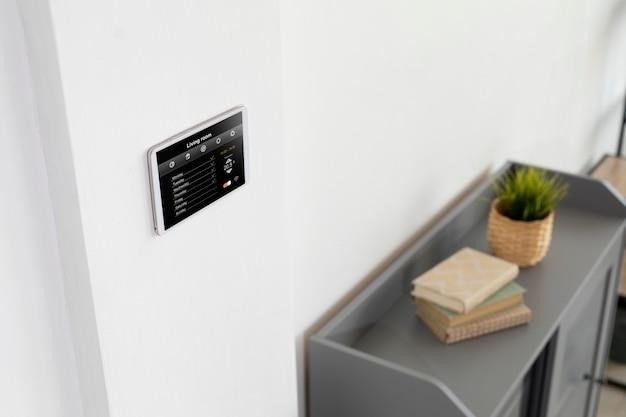Moonlight Screenplay PDF⁚ A Guide to Downloading and Understanding
This comprehensive guide explores the acclaimed Moonlight screenplay, offering insights into its download, key features, structure, impact, and legacy. Discover where to find the PDF, explore the screenplay’s availability, and understand its influence on filmmaking.
Introduction
The Moonlight screenplay, penned by Barry Jenkins and Tarell Alvin McCraney, is a cinematic masterpiece that garnered critical acclaim and multiple Academy Awards, including Best Picture and Best Adapted Screenplay. The screenplay’s profound exploration of identity, love, and the complexities of life has resonated with audiences worldwide. This guide delves into the world of the Moonlight screenplay, providing a comprehensive overview of its significance, structure, and availability.
The screenplay’s impact extends beyond its awards and accolades. It has sparked conversations about representation, diversity, and the power of storytelling. The Moonlight screenplay’s innovative narrative structure, poignant dialogue, and evocative imagery have left an enduring mark on the art of filmmaking. It serves as a testament to the transformative power of storytelling, offering insights into the human condition and the complexities of identity.
This guide aims to provide a comprehensive resource for those seeking to understand the Moonlight screenplay, its context, and its legacy. From its download availability to its key features and impact, this guide explores the nuances of this remarkable screenplay, offering a deeper appreciation for its artistic and cultural significance.
The Story of Moonlight
The Moonlight screenplay tells the story of Chiron, a young black man growing up in Miami, as he navigates the complexities of his identity, sexuality, and the harsh realities of his environment. The narrative unfolds across three distinct chapters, each representing a different stage in Chiron’s life⁚ “Little,” “Chiron,” and “Black.” This non-linear structure allows for a deeper exploration of Chiron’s evolving self, highlighting the impact of his experiences on his growth and development.
The screenplay delves into themes of trauma, resilience, and the search for belonging. Chiron’s journey is marked by a series of challenges, including abuse, poverty, and societal prejudice. Through his encounters with Juan, a drug dealer who offers him a sense of protection, and Teresa, a kind woman who provides him with a sense of belonging, Chiron grapples with his sexuality and his place in the world. The screenplay masterfully portrays the emotional turmoil Chiron experiences, capturing the complexities of his internal struggle with vulnerability and self-acceptance;
The story of Moonlight is ultimately a testament to the human spirit’s ability to endure hardship and find strength in the face of adversity. It celebrates the power of love, friendship, and the resilience of the human soul. The screenplay’s narrative arc is both poignant and hopeful, offering a powerful exploration of the complexities of identity and the enduring power of love.
Why the Moonlight Screenplay is Notable
The Moonlight screenplay stands out for its powerful and nuanced portrayal of a young black man’s journey of self-discovery, making it a significant piece of contemporary cinema. It breaks away from traditional narratives by centering on a marginalized character and tackling sensitive themes like sexuality, race, and poverty with unflinching honesty.
The screenplay’s strength lies in its ability to weave together complex emotions and social issues into a compelling and relatable story. It delves into the internal struggles of Chiron, navigating his sexuality and grappling with the harsh realities of his environment, without resorting to stereotypes or clichés. This authenticity resonates deeply with viewers, offering a fresh and impactful perspective on the human experience.
The screenplay’s impact extends beyond its narrative strength. It garnered critical acclaim for its bold portrayal of a marginalized character, challenging societal norms and promoting greater understanding and empathy towards the LGBTQ+ community. The screenplay’s success in winning numerous awards, including the Academy Award for Best Picture, solidifies its significance as a groundbreaking work that has left an indelible mark on the film industry.
Downloading the Moonlight Screenplay PDF
Obtaining a copy of the Moonlight screenplay PDF is relatively straightforward. Several online platforms provide access to the script, allowing writers, filmmakers, and enthusiasts to delve into the intricate details of its structure and dialogue. These platforms often offer free downloads, making the screenplay readily available to a wide audience.
One popular source is Screenwriters Network Script Library, a website dedicated to providing a collection of movie scripts and screenplays. Here, users can access the Moonlight screenplay PDF for free, allowing them to explore the film’s narrative structure, character development, and poignant dialogue. Other websites, such as Scripts.com, also offer access to the screenplay, providing a valuable resource for anyone interested in studying the craft of screenwriting or appreciating the brilliance of Moonlight’s story.
Additionally, platforms like Scribd and Kindle offer the screenplay in a digital format, making it easily accessible on various devices. These platforms may require a subscription or purchase, but they provide a convenient way to download and read the screenplay at your leisure. By utilizing these readily available resources, individuals can readily access the Moonlight screenplay PDF and explore its insightful narrative and powerful storytelling;
Key Features of the Moonlight Screenplay
The Moonlight screenplay stands out for its unique structure, poignant dialogue, and powerful portrayal of human connection. One of its key features is its non-linear narrative, which unfolds across three distinct chapters, each representing a pivotal stage in Chiron’s life; This structure allows the screenplay to explore the complexities of identity, love, and self-discovery through a multifaceted lens.
Furthermore, the screenplay’s dialogue is characterized by its raw authenticity and emotional depth. It captures the nuances of human interaction, particularly in the context of marginalized communities, and reflects the characters’ struggles, vulnerabilities, and aspirations. The language used is often sparse and evocative, creating a sense of intimacy and realism that draws the reader into the characters’ world.
Another notable feature is the screenplay’s visual storytelling. It utilizes vivid imagery and evocative descriptions to create a powerful cinematic experience, even on the page. The screenplay skillfully blends dialogue with action, creating a dynamic and engaging reading experience. These key features contribute to the screenplay’s overall impact, making it a powerful and enduring piece of cinematic storytelling.
The Structure of the Moonlight Screenplay
The Moonlight screenplay employs a unique and captivating narrative structure, dividing the story into three distinct chapters⁚ “Little,” “Chiron,” and “Black.” Each chapter focuses on a different stage of Chiron’s life, showcasing his experiences, relationships, and growth as he navigates his identity and sexuality.
The screenplay’s non-linear structure allows for a multifaceted exploration of Chiron’s journey. By jumping between different periods of his life, the audience gains a deeper understanding of his past experiences and how they shape his present. This structure also enhances the emotional impact of the story, as the audience witnesses Chiron’s transformation and the consequences of his choices over time.
The screenplay’s structure creates a sense of cyclical progression, demonstrating the enduring nature of Chiron’s struggles and the impact of his past on his future. This unique storytelling approach allows the audience to connect with Chiron on a deeper level, fostering empathy and understanding for his struggles and triumphs.

The Impact of Moonlight
The Moonlight screenplay has had a profound impact on the cinematic landscape, leaving an enduring legacy in its wake. Its groundbreaking portrayal of a young black man’s coming-of-age journey, grappling with sexuality and identity, resonated deeply with audiences and critics alike.
The screenplay’s sensitive and nuanced exploration of themes such as masculinity, sexuality, and race challenged traditional Hollywood narratives and sparked important conversations about representation and diversity. Its success served as a catalyst for greater inclusion and representation of marginalized communities within the film industry.
Moonlight’s critical acclaim, including its Oscar win for Best Picture, marked a watershed moment in cinematic history. It demonstrated the power of authentic storytelling and the importance of showcasing diverse perspectives on the big screen. The screenplay’s impact continues to inspire filmmakers and audiences, paving the way for a more inclusive and representative future for cinema.
The Screenplay’s Critical Reception
The Moonlight screenplay garnered widespread critical acclaim, praised for its raw honesty, poetic language, and masterful storytelling. Critics lauded the screenplay’s ability to capture the complexities of human experience, particularly the struggles of a young black man navigating his identity in a society that often fails to understand or validate his experiences.
The screenplay’s unique structure, told through three distinct chapters representing different stages of Chiron’s life, was hailed for its innovative approach to storytelling. The use of evocative imagery, dialogue, and internal monologues created a deeply immersive and emotional experience for the reader, allowing them to connect with Chiron’s journey on a visceral level.
Beyond its technical merit, the screenplay was recognized for its bold and unflinching portrayal of sexuality, race, and poverty. Critics lauded the screenplay’s ability to shed light on the challenges faced by marginalized communities, prompting important conversations about societal injustices and the need for greater understanding and empathy.
The Screenplay’s Legacy
The Moonlight screenplay has left an enduring legacy in the world of filmmaking. Its success, both critically and commercially, has inspired a new generation of filmmakers to embrace narratives that challenge conventional storytelling norms and delve into the complexities of human experience. The screenplay’s focus on marginalized voices, its exploration of themes of identity, and its use of innovative cinematic techniques have become a blueprint for contemporary filmmaking.
Moonlight’s impact extends beyond the realm of film. Its themes of love, acceptance, and self-discovery have resonated with audiences across the globe, sparking conversations about social justice, LGBTQ+ rights, and the power of representation. The screenplay’s ability to connect with people on an emotional level has made it a touchstone for filmmakers and audiences alike, solidifying its place as a landmark work of cinematic art.
The Moonlight screenplay continues to inspire filmmakers, writers, and artists to push boundaries and tell stories that resonate with the human spirit. Its legacy will continue to shape the landscape of filmmaking for years to come, reminding us of the power of storytelling to illuminate the complexities of the human experience and challenge societal norms.
Moonlight’s Influence on Filmmaking
The Moonlight screenplay has had a profound impact on filmmaking, ushering in a new era of storytelling that prioritizes authenticity, nuance, and diverse perspectives. Its influence is evident in the increased representation of marginalized characters, the exploration of complex emotions, and the use of innovative cinematic techniques. Filmmakers have been inspired by Moonlight’s ability to delve into the depths of human experience, creating narratives that resonate with a wider audience.
The screenplay’s groundbreaking approach to character development has encouraged filmmakers to move beyond stereotypical portrayals and embrace the complexity of human identities. Its exploration of themes of sexuality, race, and class has opened doors for filmmakers to tackle sensitive and often overlooked topics, prompting conversations about social justice and inclusion. The screenplay’s use of non-linear storytelling and its focus on visual storytelling have inspired filmmakers to experiment with new cinematic techniques, pushing the boundaries of traditional filmmaking.
Moonlight’s influence is undeniable, as it has become a benchmark for filmmakers who strive to create films that are both artistically compelling and socially relevant. The screenplay’s enduring legacy continues to shape the landscape of contemporary filmmaking, encouraging a more inclusive and nuanced approach to storytelling.
Where to Find the Moonlight Screenplay PDF

Obtaining a copy of the Moonlight screenplay PDF is relatively straightforward, with several online resources offering access. The most popular option is Screenwriters Network’s Script Library, a platform dedicated to providing free access to a wide range of screenplays, including Moonlight. This website allows users to read and download the screenplay in PDF format, offering a convenient and readily available source. Additionally, various websites like Daily Script and Scribd also feature the Moonlight screenplay, providing alternative options for accessing the PDF.
For those who prefer a physical copy, “Moonlight Screenplay Book (A24 Screenplay Books 3)” is available for purchase through Amazon and other online retailers. This book features the screenplay itself, along with additional content such as a foreword by Frank Ocean, an essay by Hilton Als, and acceptance speeches from the film’s historic Oscars night. This comprehensive edition offers a deeper dive into the screenplay and its impact, providing a valuable resource for those interested in studying the film’s creation.
Whether you’re seeking a digital copy or a physical book, finding the Moonlight screenplay PDF is a simple task, allowing you to delve into the world of this critically acclaimed film and explore the artistry behind its creation.
The Screenplay’s Availability
The Moonlight screenplay is widely accessible, both in digital and physical formats, catering to different preferences and needs. For those seeking a digital copy, the screenplay is readily available for download in PDF format from various online sources. Websites like Screenwriters Network’s Script Library, Daily Script, and Scribd provide free access to the PDF, allowing users to easily download and read the screenplay. This digital accessibility ensures that the screenplay is readily available to a wide audience, facilitating its study and analysis.
For those who prefer a physical copy, the “Moonlight Screenplay Book (A24 Screenplay Books 3)” offers a comprehensive edition that includes the screenplay, along with additional content such as a foreword by Frank Ocean, an essay by Hilton Als, and acceptance speeches from the film’s historic Oscars night. This book is available for purchase through Amazon and other online retailers, providing a tangible and enriching experience for those seeking a deeper dive into the screenplay’s creation and impact.
The availability of the Moonlight screenplay in both digital and physical formats ensures that it is readily accessible to a diverse audience, promoting its study, appreciation, and continued influence within the film community.
The Moonlight screenplay stands as a testament to the power of storytelling and its ability to resonate deeply with audiences. Its availability, both in digital and physical formats, ensures its continued accessibility and influence. The screenplay’s impact, evident in its critical acclaim and awards, solidifies its place as a landmark achievement in contemporary cinema. By offering a glimpse into the creative process behind the film, the screenplay provides valuable insights for aspiring filmmakers and screenplay writers, fostering a deeper appreciation for the art of storytelling.
Whether you are a film enthusiast, a screenwriter, or simply seeking a compelling read, the Moonlight screenplay offers a rich and rewarding experience. Its accessibility and enduring relevance make it a must-read for anyone interested in exploring the nuances of cinematic storytelling and the impact of powerful narratives on our cultural landscape. The screenplay’s legacy continues to inspire and shape the future of filmmaking, ensuring that its message of love, acceptance, and self-discovery resonates for generations to come.



























